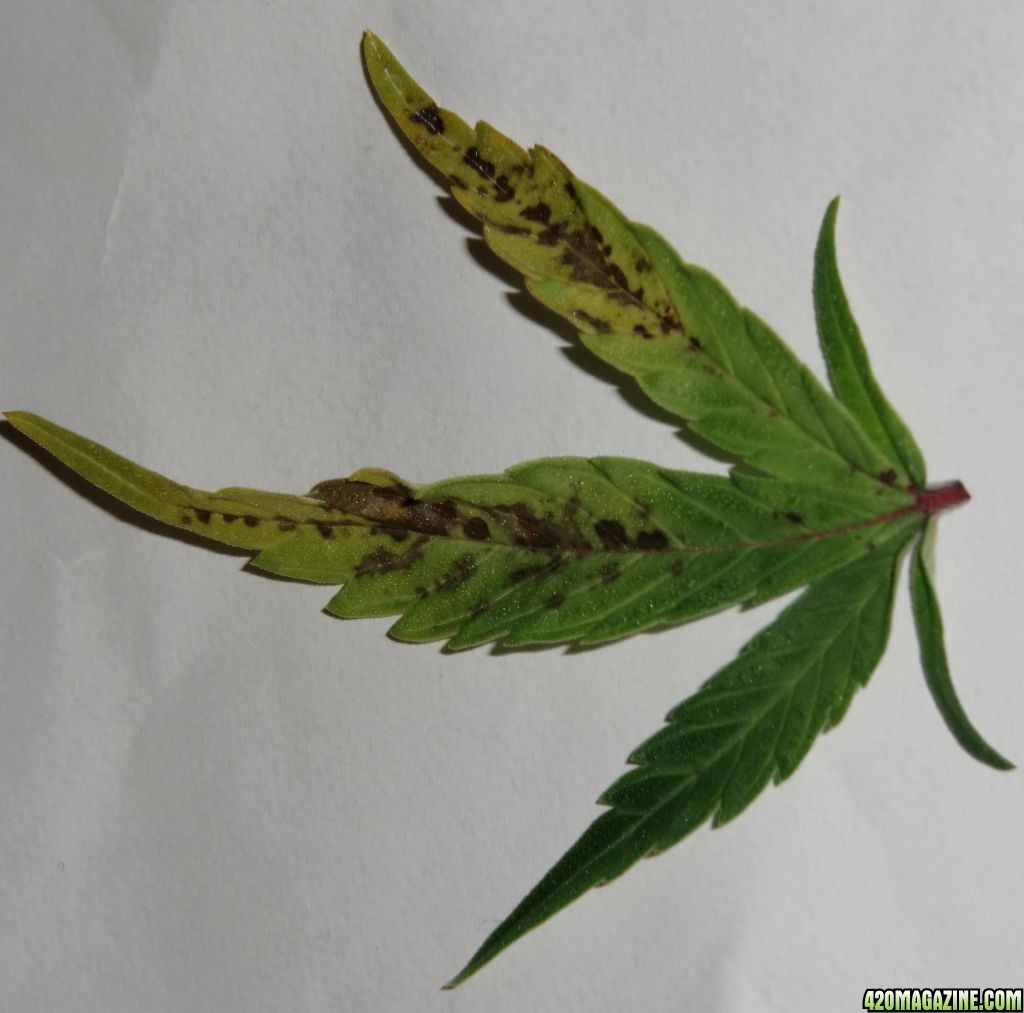As a cannabis grower noticing black dots appearing on your weed leaves can raise concerns. But don’t panic – these small dark spots usually indicate common issues that can be addressed with some adjustments to your growing practices. Let’s explore the potential causes preventive measures, and treatments for black dots on cannabis leaves.
What Causes Black Dots on Leaves?
There are three primary culprits that lead to the development of black dots on weed leaves:
Fungal Infections
Different types of fungal pathogens like powdery mildew, botrytis, and black spot fungus can infect leaves and create dark spots. High humidity and poor air circulation promote fungal growth.
Pests
Pests like thrips, aphids, and spider mites cause stippling, discoloration, and black speckles on leaves when they feed. Heavy infestations can quickly damage foliage.
Environmental Stress
Fluctuating temperatures overwatering intense light, and nutrient deficiencies stress plants and make them more susceptible to pests and diseases. Preventing issues starts with optimal growing conditions.
Symptoms of Black Spots on Leaves
- Tiny dark dots on the tops and undersides of leaves
- Spots enlarge over time
- Leaves yellow around spots
- Spots appear water-soaked or powdery depending on cause
- Defoliation if left untreated
Severe cases can retard growth and reduce yields. Catching issues early makes treatment easier.
Preventing Black Dots on Cannabis Leaves
Proper cultural practices go a long way in preventing problematic black spots:
- Choose disease-resistant strains – this avoids susceptibility
- Maintain ideal temperature and humidity levels
- Allow sufficient spacing between plants for air circulation
- Prune lower leaves to prevent pest habitat
- Keep garden free of debris and dead leaves
- Disinfect tools and equipment regularly
- Inspect leaves frequently to catch problems early
- Avoid unnecessary plant stress through proper care
Prevention is the best medicine when it comes to plant health issues!
Treating Black Spots on Weed Leaves
If preventive measures fail and dark spots emerge,Prompt action is required to treat the problem:
- Prune heavily infected leaves – prevent spread
- Apply organic antifungal sprays like neem oil – controls fungal issues
- Use predatory insects or insecticidal soaps for pest problems
- Improve air flow with fans – discourages fungi
- Fix any environmental issues like excess moisture
- Fertilize appropriately – reduce plant stress
- Consider sulfur sprays to manage fungus and mites
- Remove all plant debris – pests and spores linger
Catching infestations early makes treatment easier and avoids significant leaf loss.
When to Seek Professional Help
If you exhaust home treatments and black spots persist or worsen, seeking expert advice may be necessary. Cannabis consultants can identify specific pathogens under a microscope and recommend targeted solutions.
For severe infestations, prescription antifungal agents or pesticides may be required to get the issue under control. Although spendy, lab testing provides definitive diagnosis and treatment guidance.
Don’t hesitate to enlist professional help if DIY options fail to resolve spots on your marijuana leaves. Your crop’s health and yield may depend on it!
What If Black Spots Don’t Go Away?
Sometimes black leaf spots stubbornly persist despite your best efforts. At that point, it’s necessary to remove and destroy affected plants to prevent further spread. As disappointing as plant loss is, it’s better than compromising the rest of your crop.
When it comes to cannabis cultivation, the saying “better safe than sorry” definitely applies. Err on the side of caution for the health of your garden.
Don’t panic when a few dark specks develop on your cannabis leaves. But do pay close attention and take prompt action at the first signs of black spots. Rule out serious problems through careful inspection. Most cases can be successfully managed at home using some simple cultural practices and treatments. Being vigilant and addressing issues early is key to keeping your marijuana leaves spot-free and your plants thriving.
How To Identify and Control Septoria on Cannabis Plants
FAQ
How do you treat leaf spots on weed?
Why does my weed have dark spots?
What are the black dots on the underside of leaves?
What does weed rot look like?
- A Complete Guide to Caring for Yuki Cherry Blossom Shrub - January 23, 2025
- Identifying Red Hot Poker Seeds: What to Look For When Harvesting Torch Lily Pods - January 23, 2025
- A Complete Guide to Harvesting Evening Primrose Seeds - January 23, 2025

